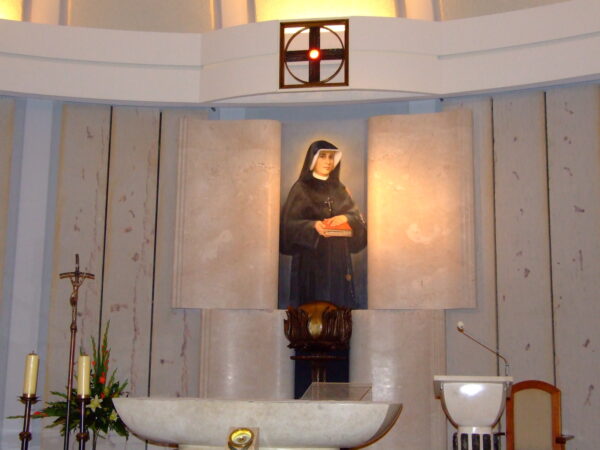“Keep your eyes on the Master’s hands.” A priest offered this advice to my husband and me during his homily on our wedding day. He encouraged us to take the part of the servants at the wedding feast in Cana, to pay attention to the way Jesus is at work in our lives and to be ready to do what he asks of us. This advice is easy to follow when the outcome is desired, but much harder to follow when suffering lies ahead.
This spring, we suffered our fourth pregnancy loss. This most recent loss was complicated by the diagnosis of an ectopic pregnancy. As I contemplated the priest’s advice, gazing at the Master’s hands, trying to determine the right course of action, I did not nor do I now understand why God asked us to endure this suffering, but I know that my eyes cannot penetrate the depths of the unfathomable mind of God. I can only submit to his request to trust him.
Want more Radiant? Sign up for our weekly newsletter!
But there is a difficulty here. Instead of letting my gaze linger on the crucified Christ, I am anxious to skip to the resurrected Christ. Christ had to die on the cross in order to rise from the dead. I want to understand the “why” of my own suffering. I have worked through the loss of a child in miscarriage before. I can see some of the fruits of that work — a deeper prayer life, a compassion for couples with similar experiences, etc. But why again? And why the added layer of an ectopic diagnosis that, in the end, required surgical intervention? I do not have an answer, and I think I need to return my gaze to the cross.
Hiding in the wounds of Christ
Until recently, I have resisted meditating on the wounds of Christ, but in my own woundedness, in the sudden loss of another child and one of my fallopian tubes, I am drawn to the wounds of Christ looking for an answer.
For years, I have been struck by two lines from the Anima Christi: “Within your wounds, hide me. Separated from you, let me never be.” I have silently recited these words after receiving our Lord in holy Communion so many times, but I could not grasp what I was requesting.
For some time, I thought that maybe asking to hide in the wounds of Christ meant that I was asking to suffer, or maybe it was akin to St. Thomas the Apostle insisting that he be able to put his hand into the side of Christ. But after further contemplation, I know now that I am not requesting to see in order to believe, nor do I think that I am requesting to suffer. Instead, when I make the request, “Within your wounds, hide me,” I think that I am asking our Lord to unite my suffering to his own and in doing so, to give my suffering value.
Transforming suffering
You see, I have realized that I want to picture Christ’s hands as they would have looked at the wedding feast in Cana — woundless — but this is not the state of my Master’s hands. We know from the Gospels that his resurrected body bears the wounds of the cross and lance. His hands bear the wounds of the nails. In my life, his precious hands are not only changing water into wine, one good into a superior good. He is also allowing me to share in his suffering and wants me to offer that suffering back to him so that he can transform the confusion, the contradictions and my suffering into the salvation of souls.
Our Lord’s wounds are not a symbol of weakness but a testimony to his sacrifice, power and love. Christ’s death is not a crushing end but a glorious beginning. The fifth wound, the wound in his side inflicted after his death out of which “immediately blood and water flowed” (Jn 19:34), draws us into this reality. The Catechism of the Catholic Church teaches that the blood and water symbolize the Sacraments of Baptism and Holy Eucharist (cf. No. 1225). In fact, Lumen Gentium says that this moment symbolizes the beginning and growth of the Church (cf. No. 3). Christ’s wounds are not empty spaces that are null and void; rather, his wounds atone, heal and create. When I make the request, “Within your wounds, hide me,” I ask believing that my own suffering can be transformed and somehow also atone, heal and create.
When I offer my wounds to Our Lord, when I ask to hide in his wounds, he uses my offering for the salvation of souls. So I will keep my eyes on the Master’s hands, confident that he can transform, even this suffering, in his own time, into wine.




